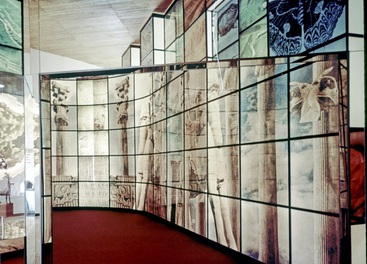|
J. William T. "Bill" Youngs, The Fair and the Falls: Spokane’s Expo ’74: Transforming an American Environment, Chapter Seventeen
|
"Expo '74" courtesy of the Flickr Commons
|
Chapter Seventeen: A Mingling of Peoples
|
SummaryExpo '74 brought visitors from around the nation and around the globe. Housing and entertaining these guests brought numerous challenges, but for the most part Spokane's hospitality was abundant. For six months foreign dignitaries, long-haired hippies, movie stars, politicians, foreign staffers, and members of diverse ethnic groups rubbed shoulders in Spokane.
|
Author reads from the Text
"An unaccustomed variety of humanity"
"For Spokanites, the Expo experience provided exposure to an unaccustomed variety of humanity. Deanna Rommel, an amusement park employee, recalled, 'One time I was working on the Ferris wheel and I had a Japanese family, a couple from New York, and someone from Texas, with the biggest cowboy hat that I had ever seen in my life. And they were all on my Ferris wheel -- all at the same time. And I thought that it was kind of funny that Spokane could attract that kind of crowd.'"
"Somber and unapproachable"
"The most intriguing visitors were the Soviets. No one would characterize them as outgoing. At first appearance they were just the opposite, somber and unapproachable. But their presence in Spokane was one of the most remarkable features of the environmental world's fair."
"We can contribute to the theme of Expo"
In response to an invitation to the Gypsies to participate in Expo, leader Jimmy Marks wrote: "We gypsies represent one of the most intact cultural entities in the United States....Our women have unique and colorful costumes that we are willing to display and discuss....Our craftsmen are able to make jewelry following age-old patterns and methods. The art of palm-reading and fortune-telling, while often maligned and satirized, is of great stature in many parts of the world.... We feel that we can contribute positively to the theme of Expo and aid in further understanding."
"We're alive and well"
Commenting on the importance of the Indian exhibit at Expo, David Brown Eagle said: "How many people here in Spokane don't even realize there's a Spokane Tribe, don't even realize there's a Spokane Indian Reservation within a forty-minute drive from here, don't even realize there are even Spokane Indians other than the baseball team?" Native American's Earth provided a vehicle for educating fair visitors to Indian cultures. No longer was the Indian "out of sight, out of mind." The Indian participation at Expo was a way of saying, "Hey, we're alive and well."

